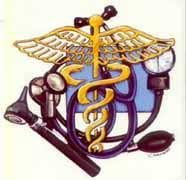
August 4, 2010 — In recent years, concerns have been raised both inside and outside of the U.S. Food and Drug Administration (FDA) about whether the current 510(k) program achieves its goals of making safe and effective devices available to the public while fostering innovation. Concerns about the program have centered on whether it allows devices to enter the market without sufficient safety and effectiveness evidence and whether a lack of predictability, consistency, and transparency is hindering device development.
The FDA today issued two comprehensive evaluations containing recommendations that address three key objectives of the agency’s public health mission as it relates to medical devices – foster device innovation, create a more predictable regulatory environment, and enhance device safety.
The FDA’s Center for Devices and Radiological Health (CDRH) assessment consists of two preliminary reports. One report focuses on ways to strengthen and clarify a premarket review process, called the 510(k) program, for medical devices that do not need to undergo a full premarket approval review. The other evaluates CDRH’s use of science in decision-making, with an eye toward adapting to new scientific information, while maintaining regulatory predictability necessary for innovation.
The two documents overlap in several places and cross-reference information. The documents can be found www.fda.gov/AboutFDA/CentersOffices/CDRH/CDRHReports/ucm220272.htm.
CDRH established two staff committees on these issues in late 2009 as part of its 2010 strategic plan. The committees collected and reviewed input from public meetings, open dockets, data analyses, and input from CDRH staff over the course of several months to prepare the complementary evaluations.
The CDRH uses science to guide its regulation of medical devices across the total product lifecycle. At any stage of that lifecycle, new, unfamiliar or unexpected scientific information may arise that warrants a change in the FDA’s thinking, expectations, and actions. CDRH is seeking to strike the right balance between the ability to adapt its approach as new science emerges and to provide predictable regulatory pathways.
“Taken together, these preliminary reports show a smarter FDA – an agency that recognizes both sides of our mission to protect and promote public health,” said CDRH Director Jeffrey Shuren, M.D. “The agency is ready to make necessary improvements to support device innovation while assuring patients receive safe and effective devices.
“Even with our significant outreach, it’s important to remember that these recommendations are preliminary,” said Shuren. “CDRH opened another public docket to receive additional comments on both reports. We will make a decision on which recommendations to adopt only after a thorough review of additional comments.”
Selected recommendations and the key public health objectives they address include:
Fostering Device Innovation
The 510(k) report recommends major improvements to the regulatory pathway for lower-risk novel devices that cannot be cleared through 510(k) but which do not warrant the more rigorous premarket approval review applied to higher-risk devices. The report calls for major reforms in the implementation of this process – called the de novo classification process. The recommendations include streamlining the process and clarification of CDRH’s expectations for submissions that undergo this type of review.
The science report recommends that CDRH make better use of scientific experts outside of the agency by developing a web-based network of external experts using social media technology. This network would help CDRH staff leverage outside knowledge without serving in an advisory capacity.
Enhancing Regulatory Predictability
The 510(k) report recommends that CDRH develop a guidance document defining a subset of moderate-risk (Class II) devices, called Class IIb, for which clinical or manufacturing data typically would be necessary to support a substantial equivalence determination. This guidance document would help clarify what information submitters should include in their 510(k) submissions so that they can plan accordingly. In addition, this would also help the center’s review staff obtain the type and level of evidence necessary to make well-supported decisions without as much need for time-consuming follow-up requests for information.
The science report recommends use of a standardized “Notice to Industry” letter that would generally be issued as a "Level 1 - Immediately in Effect" guidance document to quickly communicate when CDRH has changed its premarket regulatory expectations due to scientific information that has emerged about a certain device type. CDRH currently communicates this kind of information through individual interactions during the review process, which can lead to delays. These letters would provide greater clarity to affected manufacturers, in a timelier manner, about CDRH’s expectations with respect to a particular group of devices.
Improving Patient Safety
The 510(k) report recommends that CDRH consider revising regulations to explicitly require 510(k) submitters to provide a summary of all scientific information known or that the submitter should reasonably know regarding the safety and effectiveness of the device under review. This is not required now for 510(k) submissions and, as a result, relevant information may not be included in an initial submission. This summary would help CDRH review staff to more efficiently make decisions, and potentially avoid extensive follow-up inquiries and questions.
The 510(k) report recommends that CDRH develop a guidance document that clarifies when a device should not be used as a predicate, such as when the device has been removed from the market because of safety concerns. The report also recommends that the center consider issuing a regulation that would clarify the circumstances under which the center would exercise its authority to rescind a 510(k) clearance to remove an unsafe device from the market and preclude its use as a predicate and also consider whether additional authority is needed.
Both reports recommend that CDRH build upon public databases to include meaningful, up-to-date information that supports good decision making and promotes the safe use of devices. This could be accomplished by improving the current 510(k) database so that it includes summaries of FDA review decisions, current labeling and photos. In addition, the science report recommends that CDRH build upon the existing transparency website to provide more immediate information on how devices are regulated.
For more information: www.fda.gov
